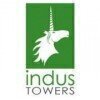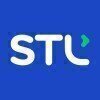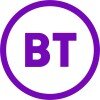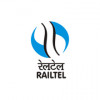Filter interviews by
Nokia Networks Engineer Interview Questions and Answers for Experienced
Nokia Networks Engineer Interview Experiences for Experienced
2 interviews found
I applied via Recruitment Consulltant and was interviewed in Mar 2023. There were 5 interview rounds.

Total 30 , To time 30 minutes
20 technical questions based on digital electronics,communication engineering and analog circuits..
8 questions based on reasoning and aptitude
2 questions based on general awareness/ current affairs
(3 Questions)
- Q1. Basic electronics including working of capacitor,resistor,analog circuits,communication engineering,antenna,RF modules,full wave rectifier,bridge rectifier, what is BCD,Optical fiber based question ( Basic...
- Q2. Concept of RF modules,
- Q3. How wifi router work and optical fiber concept
- Ans.
Wifi routers use radio waves to transmit data wirelessly, while optical fibers use light to transmit data through glass fibers.
Wifi routers use a wireless access point to connect devices to the internet
Radio waves are used to transmit data between the router and devices
Optical fibers use glass fibers to transmit data using light signals
Fiber optic cables are used for high-speed internet and long-distance communication
B...
1.Hobbies
2.Expectation from company
3. Your current job profile ( current job related questions like my experience was in UPS manufacturing so question asked on that topic and optical fiber also..)
So prepare questions based on your previous profile..
(1 Question)
- Q1. 1. It was like management round Basics about company, rules and discipline maintain related topics. 2.Salary discussion 3. Current job profile related responsibilities..
Interview Preparation Tips
- Analog Electronics
- Communication Engineering
- Digital Electronics
- Basics of electronics
2.Be confident
3.Prepare basic electronics questions
4.Prepare questions based on your current job profile( This will make huge impact)
Skills evaluated in this interview

(1 Question)
- Q1. About qualification and experience.
(1 Question)
- Q1. LTE call flow, IMS call flow, SIP call flow, LTE architecture, VOLTE & LTE difference,All interface in LTE architecture and node details, SIP Headers and Method .
Interview Preparation Tips
Top trending discussions






Interview questions from similar companies

I applied via Referral and was interviewed before Sep 2019. There were 4 interview rounds.
Interview Questionnaire
2 Questions
- Q1. Event loop , Execution context , closure , link list implementation ,
- Q2. Call , bind ,apply and how is it diff from new lambda functions , pub sub implementation in object oriented javascript , css flexbox etc.
Interview Preparation Tips

I applied via Referral and was interviewed before Sep 2020. There were 3 interview rounds.
Interview Questionnaire
1 Question
- Q1. About fiber color coding, OTDR, LSPM, Losses, etc
Interview Preparation Tips

I applied via Recruitment Consulltant and was interviewed in Dec 2024. There were 2 interview rounds.
(4 Questions)
- Q1. What is stm-1 link
- Ans.
STM-1 link refers to a Synchronous Transport Module level 1 link used in telecommunications for transmitting data.
STM-1 link operates at a data rate of 155.52 Mbps.
It is commonly used in SDH (Synchronous Digital Hierarchy) networks.
STM-1 link can carry multiple DS3 or E3 circuits.
It is equivalent to 63 E1 channels or 28 DS1 channels.
- Q2. What is Ip address and subnet mask
- Ans.
An IP address is a unique numerical label assigned to each device connected to a computer network, while a subnet mask is used to divide an IP network into subnetworks.
IP address identifies a device on a network, like 192.168.1.1
Subnet mask determines the network portion of an IP address, like 255.255.255.0
Subnet mask is used to separate the network and host portions of an IP address
- Q3. What is OSI and TCP/IP Model
- Ans.
OSI and TCP/IP models are networking models that define how data is transmitted over a network.
OSI model has 7 layers: Physical, Data Link, Network, Transport, Session, Presentation, Application.
TCP/IP model has 4 layers: Network Interface, Internet, Transport, Application.
OSI model is theoretical while TCP/IP model is practical and widely used.
OSI model is a reference model while TCP/IP model is a protocol stack.
Examp...
- Q4. What are the requirements for the implementation of stm-1 link and what is the capacity of stm-1 link
- Ans.
Requirements and capacity of stm-1 link implementation
Requirements include fiber optic cables, SDH equipment, and proper configuration
Capacity of stm-1 link is 155.52 Mbps
STM-1 link is commonly used in telecommunications for high-speed data transmission
(15 Questions)
- Q1. What is ip address and difference between ipv4 and ipv6?
- Ans.
An IP address is a unique numerical label assigned to each device connected to a computer network. IPv4 uses 32-bit addresses, while IPv6 uses 128-bit addresses.
IP address is a unique identifier for devices on a network.
IPv4 uses 32-bit addresses, represented in decimal format (e.g. 192.168.1.1).
IPv6 uses 128-bit addresses, represented in hexadecimal format (e.g. 2001:0db8:85a3:0000:0000:8a2e:0370:7334).
- Q2. What is vlan and vlan-id
- Ans.
VLAN stands for Virtual Local Area Network. VLAN ID is a unique identifier assigned to a VLAN.
VLAN is a logical grouping of devices on the same network segment.
VLANs help in segmenting network traffic for security and performance reasons.
VLAN ID is a number assigned to each VLAN to differentiate it from others.
For example, VLAN 10 might be used for finance department while VLAN 20 for marketing.
- Q3. What is layer-2 and layer-3 services. Also what is the difference between them.
- Ans.
Layer-2 and layer-3 services refer to different levels of network services in the OSI model.
Layer-2 services operate at the data link layer and include functions like MAC address assignment and Ethernet switching.
Layer-3 services operate at the network layer and include functions like IP address assignment and routing.
The main difference between layer-2 and layer-3 services is the level at which they operate in the OSI...
- Q4. Explain sdh structure and sdh frame
- Ans.
SDH structure refers to the hierarchy of synchronous digital signals, while SDH frame is the basic unit of data transmission in SDH networks.
SDH structure includes various levels such as STM-1, STM-4, STM-16, etc.
SDH frame consists of a fixed number of bytes, with overhead for management and error correction.
SDH frame structure includes sections, lines, and paths for data transmission.
Example: STM-1 is a common level i...
- Q5. What is DCCR and DCCM?
- Ans.
DCCR stands for Data Center Control Room and DCCM stands for Data Center Construction Manager.
DCCR is a centralized location within a data center where operators monitor the performance of servers, networks, and other equipment.
DCCM is responsible for overseeing the construction and maintenance of data center facilities.
Examples: DCCR helps in ensuring smooth operations of data centers by monitoring and managing resour...
- Q6. What is ipv4 and ipv6 address of google dns server
- Ans.
IPv4 address of Google DNS server is 8.8.8.8 and IPv6 address is 2001:4860:4860::8888.
IPv4 address: 8.8.8.8
IPv6 address: 2001:4860:4860::8888
- Q7. What is subnet mask and how to calculate the no. Of usable ip's. What is network host ip and broadcast ip
- Ans.
Subnet mask is used to divide an IP network into subnetworks, determining the network and host portions of an IP address.
Subnet mask is a 32-bit number that separates the network and host portions of an IP address.
To calculate the number of usable IPs in a subnet, subtract 2 from the total number of IPs in the subnet.
Network host IP is the first IP address in a subnet, while broadcast IP is the last IP address in a sub...
- Q8. What are different kinds of cards used in tejas 1400 and 1600 mux.
- Ans.
Different kinds of cards used in Tejas 1400 and 1600 mux include line cards, switch cards, and power cards.
Line cards: used for connecting the mux to external devices
Switch cards: used for routing data within the mux
Power cards: used for providing power to the mux
Examples: STM-1 line card, STM-4 switch card, power supply card
- Q9. What is difference between xa60g and xa20g card.
- Ans.
The main difference between xa60g and xa20g cards is the processing power and memory capacity.
xa60g card has higher processing power and memory capacity compared to xa20g card
xa60g card is more suitable for high-performance computing tasks
xa20g card may be more cost-effective for less demanding applications
- Q10. What is gpon technology? Also explain briefly gpon architecture?
- Ans.
GPON technology is a type of passive optical network that uses fiber-optic cables to deliver high-speed internet, TV, and phone services.
GPON stands for Gigabit Passive Optical Network
It uses a point-to-multipoint architecture, where a single optical fiber serves multiple users
GPON architecture includes an Optical Line Terminal (OLT) at the service provider's central office and Optical Network Terminals (ONTs) at the c...
- Q11. How to add and delete nodes in NMS?
- Ans.
Nodes can be added and deleted in NMS by using the management interface or command line interface.
Nodes can be added through the management interface by selecting the 'Add Node' option and providing the necessary information such as IP address, hostname, and SNMP credentials.
Nodes can also be added through the command line interface by using specific commands to add a new node to the network management system.
To delete...
- Q12. How to upgrade software in olt, ont and tejas 1400 locally and from nms?
- Ans.
To upgrade software in OLT, ONT, and Tejas 1400 locally and from NMS, follow these steps.
Locally: Use a USB drive to transfer the software update file to the device. Access the device's management interface and initiate the upgrade process.
From NMS: Use the Network Management System (NMS) to remotely push the software update to the devices. Schedule the upgrade during off-peak hours to minimize disruption.
Ensure compat...
- Q13. What are different types of alarms occuring in tejas equipments
- Ans.
Different types of alarms in Tejas equipments include power alarms, temperature alarms, and communication alarms.
Power alarms: indicate issues with power supply or voltage levels
Temperature alarms: alert when equipment temperature exceeds safe limits
Communication alarms: signal problems with data transmission or network connectivity
- Q14. Explain VCG, VCAT
- Ans.
VCG stands for Voltage Controlled Gain and VCAT stands for Voltage Controlled Attenuator.
VCG is a circuit that adjusts the gain of an amplifier based on a control voltage.
VCAT is a circuit that adjusts the attenuation of a signal based on a control voltage.
Both VCG and VCAT are commonly used in electronic devices to control signal levels.
Example: VCG can be used in audio amplifiers to adjust the volume based on user in...
- Q15. What is ipmpls? What are the advantages of MPLS? Which one is better mpls or traditional routing.
- Ans.
MPLS stands for Multiprotocol Label Switching. It is a protocol used in high-performance telecommunications networks.
Advantages of MPLS include improved performance, scalability, quality of service, and traffic engineering capabilities
MPLS allows for efficient packet forwarding based on labels instead of IP addresses
MPLS can support different types of traffic, such as voice, video, and data, with different service leve...


(2 Questions)
- Q1. All Technical issues closer
- Q2. Field me job technicals,owner issue, Technicals issue clear
(1 Question)
- Q1. All equipment work (IIPMS,SPS,SMPS,SPSM )
Interview Preparation Tips
All technical issues
Owner issues
IME issuses
Technicians issues
Customer issues etc closer

I applied via Recruitment Consulltant and was interviewed in Apr 2022. There were 5 interview rounds.

General knowledge, awareness, ability test, general English,math(percent,profit,loss, population, average etc)
(1 Question)
- Q1. Previous experience knowledge
(1 Question)
- Q1. Something tell about
(1 Question)
- Q1. Previous experience knowledge and something tell about you
Interview Preparation Tips
- Telecom

I applied via Recruitment Consulltant and was interviewed in Jul 2022. There was 1 interview round.
Interview Questionnaire
2 Questions
- Q1. 1.Basic questions related to Gpon Technology. 2.Civil ftth construction, gis,OFC,cable type all suestions
- Q2. About Ftth ofc cabling splicing.
Interview Preparation Tips

Interview Questionnaire
23 Questions
- Q1. Bill of material of 1 KM 11 KV line
- Ans.
The bill of material for a 1 KM 11 KV line includes various components such as conductors, insulators, transformers, and poles.
Conductors: Copper or aluminum cables used to transmit electricity.
Insulators: Materials like porcelain or polymer used to support and isolate the conductors.
Transformers: Devices used to step up or step down the voltage.
Poles: Structures to support the conductors and maintain their position.
Ot...
- Q2. Bill of material of 1 KM AB cable line
- Ans.
The bill of material for a 1 KM AB cable line includes various components.
The cable itself
Insulators
Connectors
Poles or towers
Grounding equipment
Hardware such as bolts and clamps
Tools for installation
Safety equipment
Transportation costs
Labor costs
- Q3. Bill of material of 1KM underground line 33 KV ,11,KV,LT lines
- Ans.
The bill of material for a 1KM underground line with 33KV, 11KV, and LT lines.
The bill of material should include all necessary components for the underground line.
Components may include cables, transformers, switchgear, and other electrical equipment.
The quantity of each component should be specified in the bill of material.
The bill of material should also include any necessary accessories such as clamps, connectors,
- Q4. Testing commissioning of RMU ,relay setting
- Ans.
Testing and commissioning of RMU and relay setting is a crucial aspect of project engineering.
Testing and commissioning of RMU involves verifying the functionality of the switchgear and ensuring it is safe for operation.
Relay setting involves configuring the protection relays to ensure they operate correctly in the event of a fault.
Testing and commissioning should be carried out in accordance with relevant standards an...
- Q5. Transformer earthing
- Q6. What is lightning arrestor
- Ans.
A lightning arrestor is a device used to protect electrical equipment from lightning strikes.
It is also known as a surge arrester or lightning diverter.
It works by providing a low-impedance path for lightning current to flow to the ground.
It is commonly used in power distribution systems, telecommunication networks, and buildings.
Examples include metal oxide varistors, gas discharge tubes, and carbon block arrestors.
- Q7. Soil conductivity test
- Q8. Transformer testing
- Q9. ACSR conductor testing ABC testing Pannel testing Structure testing
- Q10. Earthing Earthing of transformer Earthing of lightning arrester Earthing of sub station Earthing of single pole Earthing of pannels
- Q11. What is discharge rods
- Ans.
Discharge rods are grounding devices used to discharge static electricity from equipment or machinery.
Also known as grounding rods or earthing rods
Typically made of copper or aluminum
Used in industries such as oil and gas, chemical, and manufacturing
Prevents damage to equipment and potential safety hazards
Example: Discharge rods are commonly used in refineries to prevent explosions caused by static electricity buildup.
- Q12. Size of conductors Size of cables
- Ans.
The size of conductors and cables is an important factor in determining their electrical properties and performance.
The size of a conductor is determined by its cross-sectional area, which affects its resistance and current-carrying capacity.
Cable size is determined by the current it needs to carry and the distance it needs to travel.
Larger conductors and cables can carry more current and have lower resistance, but may...
- Q13. What is GTP What is MQP What is FQP
- Ans.
GTP is a protocol used in cellular communication. MQP and FQP are not commonly used acronyms.
GTP stands for GPRS Tunnelling Protocol
It is used in cellular communication to allow data transfer between different networks
MQP and FQP are not commonly used acronyms and may refer to specific organizations or products
- Q14. Transformer oil testing
- Q15. Cable insulation testing Continuity testing High pot test
- Q16. What is HDD machine
- Ans.
HDD machine is a drilling machine used for horizontal directional drilling.
HDD stands for Horizontal Directional Drilling
It is used for underground drilling without disturbing the surface
It is commonly used for laying pipelines, cables, and conduits
The machine uses a drill stem and a drilling fluid to bore through the ground
It requires skilled operators and engineers to operate and plan the drilling process
- Q17. PSC pole STP pole RS joist pole Rail pole
- Q18. HDPE PIPE GI PIPE PLB duct
- Q19. Chemical earthing Electrical earthing
- Q20. Jointing of cables Jointing of conductors
- Ans.
Jointing of cables and conductors is a crucial aspect of project engineering.
Jointing involves connecting two or more cables or conductors to ensure continuity of electrical flow.
Various methods of jointing include crimping, soldering, and welding.
Factors such as the type of cable, voltage, and current capacity must be considered when selecting a jointing method.
Proper insulation and sealing of joints is essential to p...
- Q21. Tell me about yourself
- Ans.
Experienced project engineer with a background in civil engineering and a passion for problem-solving and team collaboration.
Bachelor's degree in Civil Engineering
5+ years of experience in project management
Proficient in AutoCAD and project management software
Strong communication and leadership skills
Successfully led a team in completing a major infrastructure project on time and within budget
- Q22. Previous company and project details
- Q23. Salary discussion
Skills evaluated in this interview

Project Engineer Interview Questions & Answers
Sterlite Technologiesposted on 13 Apr 2021
I applied via Naukri.com and was interviewed before Apr 2020. There was 1 interview round.
Interview Questionnaire
1 Question
- Q1. Oprical fiber
Interview Preparation Tips
Nokia Networks Interview FAQs
Some of the top questions asked at the Nokia Networks Engineer interview for experienced candidates -
Tell us how to improve this page.
Nokia Networks Interviews By Designations
- Nokia Networks R&D Engineer Interview Questions
- Nokia Networks Software Engineer Interview Questions
- Nokia Networks Solution Engineer Interview Questions
- Nokia Networks Technical Lead Interview Questions
- Nokia Networks Project Engineer Interview Questions
- Nokia Networks Engineer Interview Questions
- Nokia Networks Network Engineer Interview Questions
- Nokia Networks Software Development Engineer Interview Questions
- Show more
Interview Questions for Popular Designations
- Senior Executive Presales Interview Questions
- Lead and Assistant Manager Interview Questions
- Software Engineering Lead Interview Questions
- Customer Experience Associate Interview Questions
- Cce Associate Interview Questions
- Java Developer Intern Interview Questions
- Application Development Analyst Interview Questions
- Sales Associate Interview Questions
- Show more
Nokia Networks Engineer Interview Process for Experienced
based on 1 interview
Interview experience
Engineer Interview Questions from Similar Companies
Fast track your campus placements
Nokia Networks Engineer Reviews and Ratings
based on 9 reviews
Rating in categories
|
R&D Engineer
392
salaries
| ₹6.6 L/yr - ₹27.5 L/yr |
|
Technical Lead
384
salaries
| ₹9 L/yr - ₹32.4 L/yr |
|
Network Engineer
243
salaries
| ₹1.5 L/yr - ₹9 L/yr |
|
Technical Specialist
242
salaries
| ₹8.6 L/yr - ₹34 L/yr |
|
Fault Management Engineer
241
salaries
| ₹1.5 L/yr - ₹9.8 L/yr |

Sterlite Technologies

Indus Towers

Cisco

BT Business
- Home >
- Interviews >
- Nokia Networks Interview Questions >
- Nokia Networks Engineer Interview Questions for Experienced















